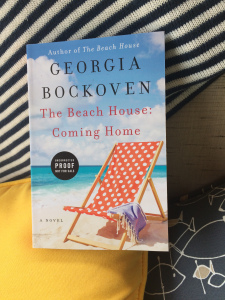Next up in this unplanned ‘Best of Megan’s Sharkelist” series is Central Station by Lavie Tidhar, a novel I didn’t expect to dig as much as I did. I loved Tidhar’s BSFA-nominated Osama, but I thought this one might wear a little thin with the trope-ish diligence I’d picked up from other, pre-Shadow Clarke reviews, but it’s nothing like that. There’s an earnest love for sci-fi, sure, but also an undoing of sci-fi, and it’s all done in a way that feels fresh and forward-thinking, while also being welcoming and unpretentious.
Comments on the Shadow Clarke blog have discussed its fix-up nature, and whether its fix-up origins are obvious or not. It may be that I’ve been reading too many fragmented, mosaic novels over the years to be sensitive to odd transitions, but it all felt complete and cogent to me.
I can’t imagine a Clarke jury that wouldn’t shortlist Central Station, but in case it does get ignored, I highly recommend you read this novel.
*****
 As one of the more popular Clarke-eligible novels among the shadow jurors, much has already been written about Lavie Tidhar’s Central Station. Maureen sees it as a metafictional next step in science fiction, Victoria sees it as a tale about love and nuanced optimism, and Jonathan values its use of multiculturalism and space (physical space, not outer space, but that omission is just as key in this novel). What I adore about this novel is that it is all of these things, embracing traditional science fiction while reworking it, molding it into a human, rather than a techno, landscape.
As one of the more popular Clarke-eligible novels among the shadow jurors, much has already been written about Lavie Tidhar’s Central Station. Maureen sees it as a metafictional next step in science fiction, Victoria sees it as a tale about love and nuanced optimism, and Jonathan values its use of multiculturalism and space (physical space, not outer space, but that omission is just as key in this novel). What I adore about this novel is that it is all of these things, embracing traditional science fiction while reworking it, molding it into a human, rather than a techno, landscape.
Set in a far-future Jaffa-Tel Aviv, the novel meanders through a community set at the base of spaceport, primarily centered on the doings of one family, their lovers, and their acquaintances. The chapters highlight daily life in this busy district, while at the same time linking each character’s subplot to grander themes of connectedness and humanity.
Part of the way it reworks things is that it’s not about the Up and Out, but the ups and downs. The rigors of life are always present: people make decisions, those decisions impact life, and they rarely have anything to do with that giant monstrosity towering from the south that hurls people into outer space. The Central Station of Central Station is a mere landmark, an economic hub and cultural icon, but as Maureen K. Speller points out in her review, “…even in science fiction, that so-called literature of the future, nothing lasts forever. The symbolic tropes – space ships, robots, AIs – will all eventually be absorbed and become part of the scenery.” The Central Station of the future is the airport of today: not that big of a deal.
In the long tradition of celebrated science fiction fix-up novels, Central Station includes previously published short stories set in the same future setting. But unlike other fix-up writers: Van Vogt and his darting, bucking plot twists to stitch random things together; or the serialized stories of Isaac Asimov or Charles Stross (and everyone in between), Central Station displays a continuity and flow that does not easily betray its origins. As a novel, it works, but it’s important to recognize that this is not a new, experimental approach to science fiction, nor is it an un-novel-like format.
Not only does Central Station pay homage to a traditional sci-fi format (replete with maps and a character list laced with trademarked Tidhar snark), it’s packed with decades of homegrown sci-fi references that add another layer to the tale, but without burdening readers with prerequisite reading. Perhaps the most striking genre juxtaposition, for me, at least, is with Clifford Simak’s Way Station. Both novels, in their own grounded ways, portray life on Earth around a single space hub, while raising questions about world peace and human nature. Whether intentional or not, Central Station speaks to its forebear by canceling it out, giving noise and plurality to Simak’s Midwestern, on-the-brink isolationism, and humble humanism to Simak’s disappointed optimism. Where Simak’s single Great Man makes intergalactic connections while the rest of humanity falters, Tidhar’s cast of characters just keep on keeping on. Where Simak seems to be saying, “We’re so messed up, we should stay away from others until we’re perfect beings,” Tidhar seems to be saying, “Dude, it’s happening whether you like it or not.”
Of course, Simak’s point-of-view is from an insulated space, but, while Central Station is different from Way Station’s sterilized, liberal American approach to futurism, to call it a novel about multiculturalism feels like Western gaze on what Tidhar likely sees as a matter-of-fact, inevitable trait of an already attractive, cosmopolitan region. Tidhar instead is shifting the center of future globalism back to the Middle East (“but east of what? middle of where?”), reclaiming SF from western models. Much of Tidhar’s work has been a global re-centering of pulp and SF tradition, and Central Station is an elegant, artful success.
Along those lines, however, it would be too simplistic (and possibly insensitive) to accept this future Jaffa-Tel Aviv at face value as a model of cultural peace. Located within the so-called Judea Palestina Federal Union, things seem suspect: sure, there’s mention of a crumbled border wall, but it’s not cleaned up, and, as the narrator also points out, “In North Tel Aviv the Jews lived in their skyrises, and in Jaffa to the South the Arabs had reclaimed their old land by the sea,” with descendants of refugee laborers inhabiting the in-between. Like a veritable human wall between two competing cultures. Descriptions like these, and the characters’ avoidance of even passing discussions about the political situation, hint that the Jaffa-Tel Aviv of Central Station seems less like a peaceful post-tension setting, and more simply a critical economic hub that’s too expensive to dare limit movement and commerce, and too important to tolerate much conflict.
The lack of awkward neighborly political discussion symbolizes more than just repressed social tension, though; it’s also normal social etiquette. Maureen K. Speller adds in her review, “Central Station is not clinically futuristic; instead, it is quotidian,” which, to the consternation of many a sci-fi writer, is the actual reality of any kind of valid futurism. Glittering with robots, data vampires, and Other intelligences, Central Station is packed with science fiction tropes, but prefers to focus on the daily life of those tropes. This quotidian focus is why, perhaps, I find this novel so refreshing. It’s not future-shock or future-gloom, but more like future-“eh, it is what it is.”
It’s about the ups and downs, not the Up and Out. Central Station ends with a euthanasia roller coaster ride: a metaphor for life, death, home, and – why not? – science fiction, which, for a novel about a space station, feels more like an anti-space novel. Throughout its progression, nobody escapes the gravity well; they make home in it. And, as Vladimir Chong reaches the end of his life, consumed by unpredictable and unreliable memories, he opts not for death in the void, despite such a convenience being right there in his own backyard, but for simulated space travel: a slow ticking up a track to a bird’s-eye view of the twin cities, followed by a plummeting down, followed by relentlessly crushing deathspins against a generated gravitational force.
It’s a lot to consider.
But I think it all comes down to the beginning, that far-future flashback introduction:
Advertisements Share this:Once, the world was young… Dr. Novum had not yet come back from the stars. People still lived as they had always lived…





